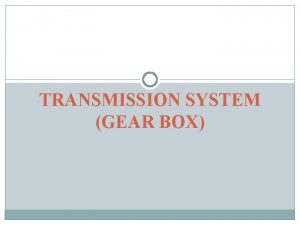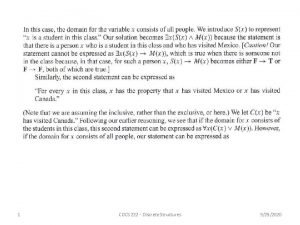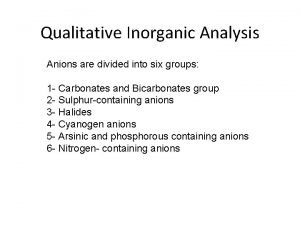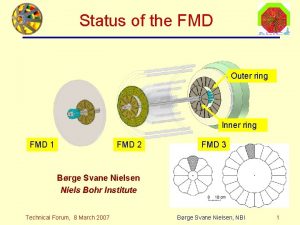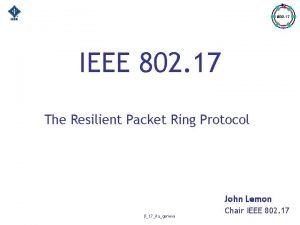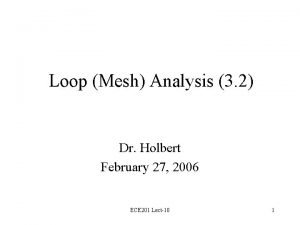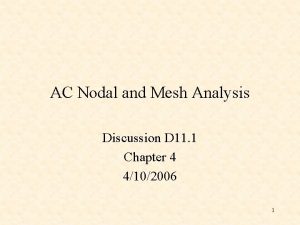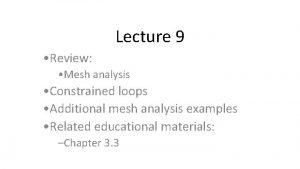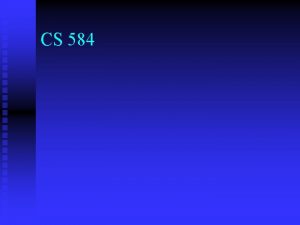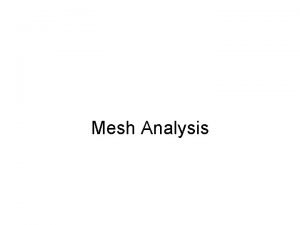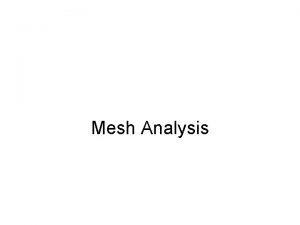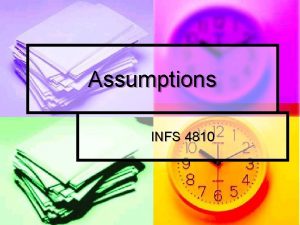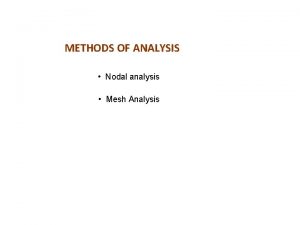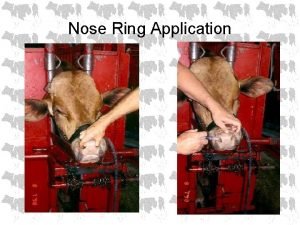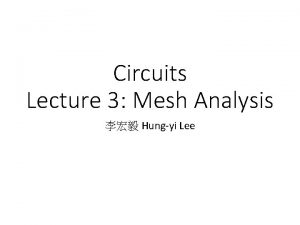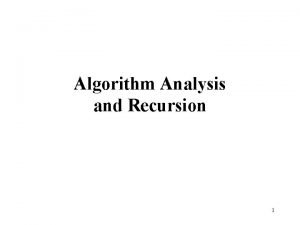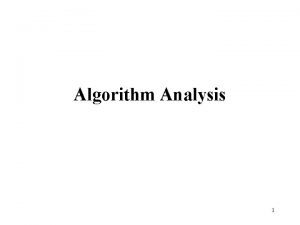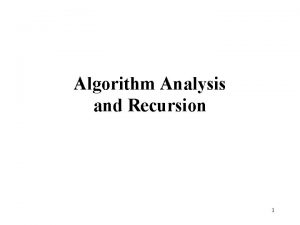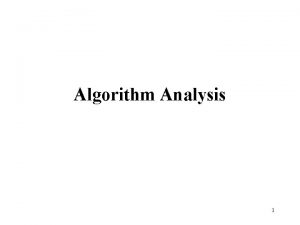CS 584 Algorithm Analysis Assumptions Consider ring mesh



















- Slides: 19

CS 584

Algorithm Analysis Assumptions Consider ring, mesh, and hypercube. n Each process can either send or receive a single message at a time. n No special communication hardware. n When discussing a mesh architecture we will consider a square toroidal mesh. n Latency is ts and Bandwidth is tw n

Basic Algorithms Broadcast Algorithms uone to all (scatter) uall to one (gather) uall to all n Reduction uall to one uall to all n

Broadcast (ring) n Distribute a message of size m to all nodes. source

Broadcast (ring) n Distribute a message of size m to all nodes. 3 4 2 source 1 2 n 3 4 Start the message both ways T = (ts + twm)(p/2)

Broadcast (mesh)

Broadcast (mesh) Broadcast to source row using ring algorithm

Broadcast (mesh) Broadcast to source row using ring algorithm Broadcast to the rest using ring algorithm from the source row

Broadcast (mesh) Broadcast to source row using ring algorithm Broadcast to the rest using ring algorithm from the source row T = 2(ts + twm)(p 1/2/2)

Broadcast (hypercube)

Broadcast (hypercube) 3 3 2 2 1 3 3 A message is sent along each dimension of the hypercube. Parallelism grows as a binary tree.

Broadcast (hypercube) 3 3 2 2 1 3 T = (ts + twm)log 2 p 3 A message is sent along each dimension of the hypercube. Parallelism grows as a binary tree.

Broadcast Mesh algorithm was based on embedding rings in the mesh. n Can we do better on the mesh? n Can we embed a tree in a mesh? u. Exercise for the reader. (-: hint, hint ; -) n

Other Broadcasts Many algorithms for all-to-one and all-to-all communication are simply reversals and duals of the one-to-all broadcast. n Examples u. All-to-one FReverse the algorithm and concatenate u. All-to-all FButterfly and concatenate n

Reduction Algorithms Reduce or combine a set of values on each processor to a single set. u. Summation u. Max/Min n Many reduction algorithms simply use the all-to-one broadcast algorithm. u. Operation is performed at each node. n

Reduction If the goal is to have only one processor with the answer, use broadcast algorithms. n If all must know, use butterfly. u. Reduces algorithm from 2 log p to log p n

How'd they do that? Broadcast and Reduction algorithms are based on Gray code numbering of nodes. n Consider a hypercube. n 110 6 010 2 7 3 011 100 4 000 0 111 5 101 1 001 Neighboring nodes differ by only one bit location.

How'd they do that? Start with most significant bit. n Flip the bit and send to that processor n Proceed with the next most significant bit n Continue until all bits have been used. n

Procedure Single. Node. Accum(d, my_id, m, X, sum) for j = 0 to m-1 sum[j] = X[j]; mask = 0 for i = 0 to d-1 if ((my_id AND mask) == 0) if ((my_id AND 2 i) <> 0 msg_dest = my_id XOR 2 i send(sum, msg_dest) else msg_src = my_id XOR 2 i recv(sum, msg_src) for j = 0 to m-1 sum[j] += X[j] endif mask = mask XOR 2 i endfor end
 Sliding mesh gear system
Sliding mesh gear system Ee-584
Ee-584 Troop 584
Troop 584 20 584
20 584 Ps 573
Ps 573 Discrete structures
Discrete structures How are anions divided into groups
How are anions divided into groups Constriction ring and retraction ring
Constriction ring and retraction ring Hesselbach's triangle borders
Hesselbach's triangle borders Inguinal hernia
Inguinal hernia Ring a ding ding dong christmas song
Ring a ding ding dong christmas song Ring christmas bells ring them loud
Ring christmas bells ring them loud Inner ring and outer ring
Inner ring and outer ring Resilient packet ring
Resilient packet ring Non planar circuit
Non planar circuit Find vo using mesh analysis
Find vo using mesh analysis Mesh analysis matrix method
Mesh analysis matrix method Mesh analysis 3 loops
Mesh analysis 3 loops Mesh analysis by inspection
Mesh analysis by inspection Mesh analysis
Mesh analysis
